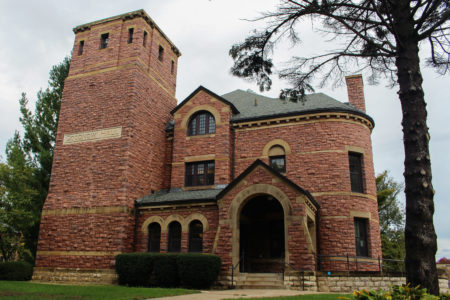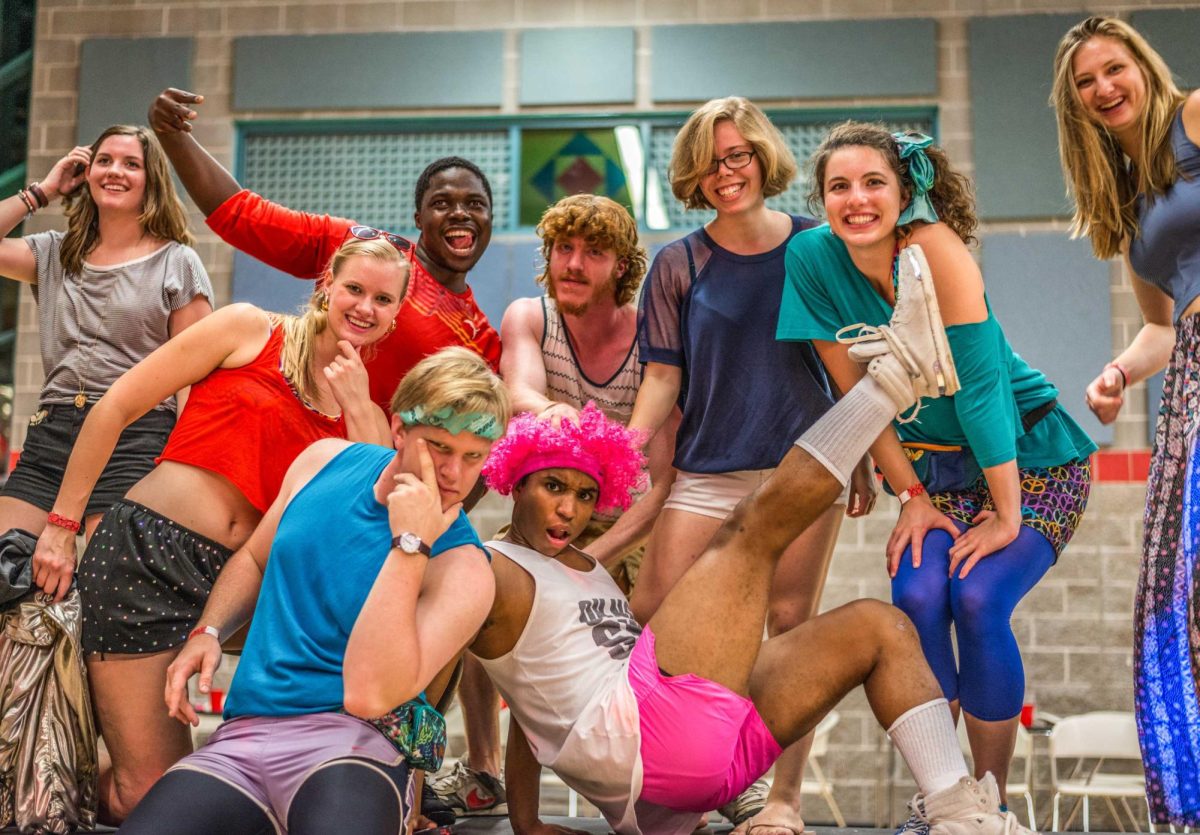Much of the College’s current landscape, including Goodnow, the current home of the Anthropology department, did not exist before the late 1800s. In a hot summer day in 1882, two tornadoes struck and swept across Grinnell, destroying the entirety of the college campus.
“The college campus consisted of two buildings: a beautiful stone building, and a rather nice brick building. The brick building was absolutely flattened,” said Byron Hueftle-Worley, a native Grinnell resident and City Council member who studied the tornadoes for decades. Later in the same night of the double tornadoes, the chemicals in the stone building caught on fire. “That building was utterly gutted by the fire,” Hueftle-Worley said.
Edward A. Goodnow, a wealthy industrialist from Massachusetts who learned about the disaster from a friend who was on the Board of Trustees, donated $10,000 to the College to build a new library that would also house an observatory. A few years later, Goodnow Hall was completed and led Grinnell into a new era.
“Within two years after the storm, Iowa College had arisen phoenix-like from its ruins,” wrote Joseph Wall in the book “Grinnell College in the Nineteenth Century,” Dean of the College in the 1970s.
However, Goodnow’s vision of the building as a library and observatory did not last long. By 1905, Carnegie Hall was constructed as the new and larger library, and Goodnow was converted to the home of the science department. The observatory later closed in 1928.
“The telescope was there until the 1930s. The tower used to be occupied by a staircase going up to a platform … and then there was an iron telescope stand. Those things were there when we renovated the building [in 1995],” said John Whitaker, anthropology.
With the opening of Carnegie, Goodnow underwent its first major renovation, which resulted in the building becoming the home of the physics and mathematics departments. This era of Goodnow was marked by numerous individuals who contributed significantly to the College’s reputation in science. In Goodnow, Robert Noyce ’49 received his trainings in physics before becoming a co-founder of Intel.
The golden age of Goodnow was superseded by a period of neglect in the 1970s-1980s when newer buildings replaced its prominence on campus. Eventually, the fire department decided that the building had deteriorated past the point where it was safe to hold classes, so it instead served as a building for faculty offices and storage for the science division.
As the College approached its sesquicentennial celebration in 1996, members of the anthropology department petitioned the administration to move the department from a run-down house on Park Street into Goodnow. The College, partially motivated by the celebration to showcase its finest pieces of architecture, eventually agreed, and in 1995, Goodnow underwent its largest renovation since its early days. Since then, it has been the home of the anthropology department.
“When we started looking at it for renovation, it had remnants of psychology. The upstairs here had been chopped into little cubicles. There was an isolation chamber in the basement, and there were rat cages. It was a mess,” Whitaker said.
The building’s history is still etched in its walls, from carvings by students on antiquated pillars in the first-floor classroom to the offices at the base of the former observatory tower. With the construction of the new Humanities and Social Science Complex, it is unclear whether Goodnow’s role will once again be redefined to accommodate the college’s needs, but for now, it remains the oldest and, arguably, most captivating building on campus.

Photo by Zoey Kohler























































